Blog

#bioPGH Blog: BioBlitz 2024 Results!
 A resource of Biophilia: Pittsburgh, #bioPGH is a weekly blog and social media series that aims to encourage both children and adults to reconnect with nature and enjoy what each of our distinctive seasons has to offer.
A resource of Biophilia: Pittsburgh, #bioPGH is a weekly blog and social media series that aims to encourage both children and adults to reconnect with nature and enjoy what each of our distinctive seasons has to offer.
The morning may have started out rainy, but nature enthusiasts of all ages were out in full force at this year’s BioBlitz this past weekend!
What is a bioblitz?, one might ask. In the most traditional scientific sense, a bioblitz is an event that unites scientists and community members to identify as many living things in a given area over a set time frame. It truly is a mad dash, or a “blitz,” to quickly identify everything possible. Scientists can then use the data to better understand the health of the local ecosystem and keep a record of the living things in the study area.
Our BioBlitz and Family Fun Festival combines the science of a bioblitz with the joy of celebrating wild wonders. All day Sunday, the front of lawn of Phipps was bustling with an assortment of local scientists and naturalists, all sharing their work and chatting about the biodiversity of wild Pennsylvania. If you weren’t able to join us for the big day, check out what the excitement was all about!
Local Scientists and Naturalists
A variety of local researchers and naturalists were present from universities and non-profits across the city. Each of them brought activities and demonstrations to help demonstrate their work, many led themed nature walks into Schenley Park throughout the day to explore birds, snails, spiders, fish, plants, fungi, and everything in between! There were also presentations from Stormy Oaks Nature Conservancy, Meadowcroft Rock Shelter, and two botanical illustration classes to merge the worlds of art and science – not to mention sharpen those observation skills.
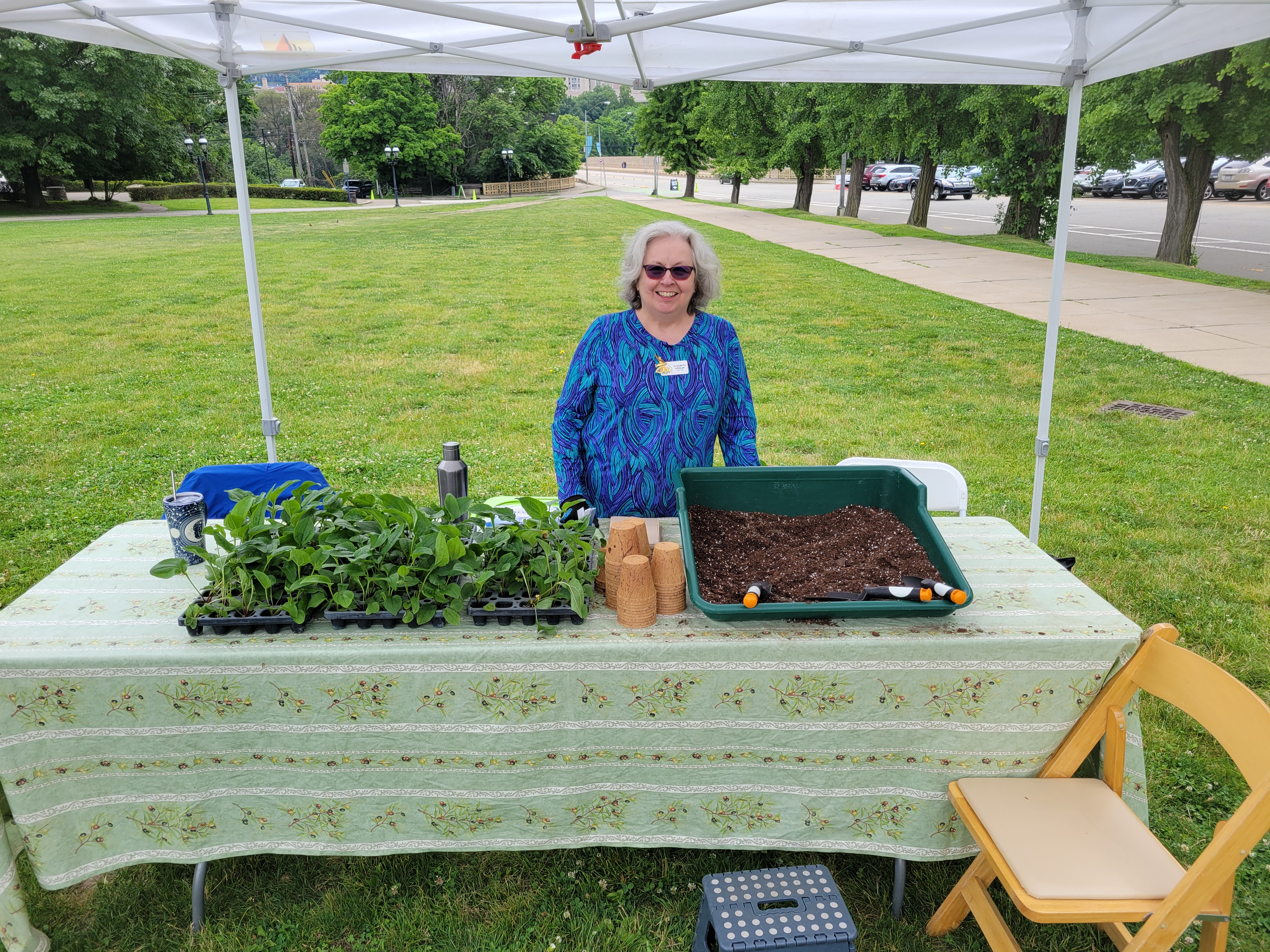
Phipps volunteers and interns sent families home with purple coneflower plants!
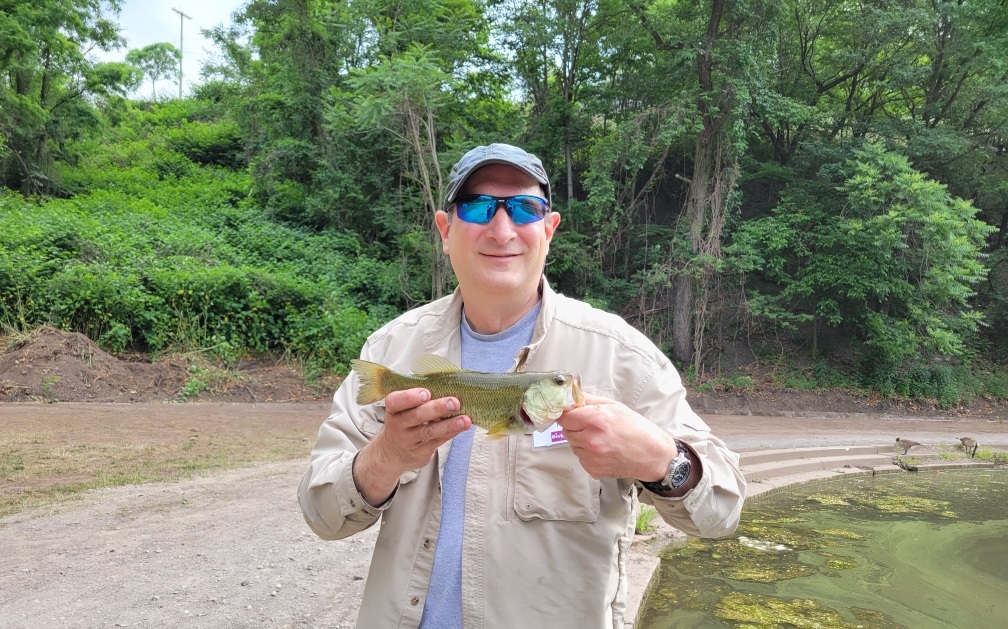
Dr. Brady Porter of Duquesne University surveyed the lake in Schenley Park for fish!
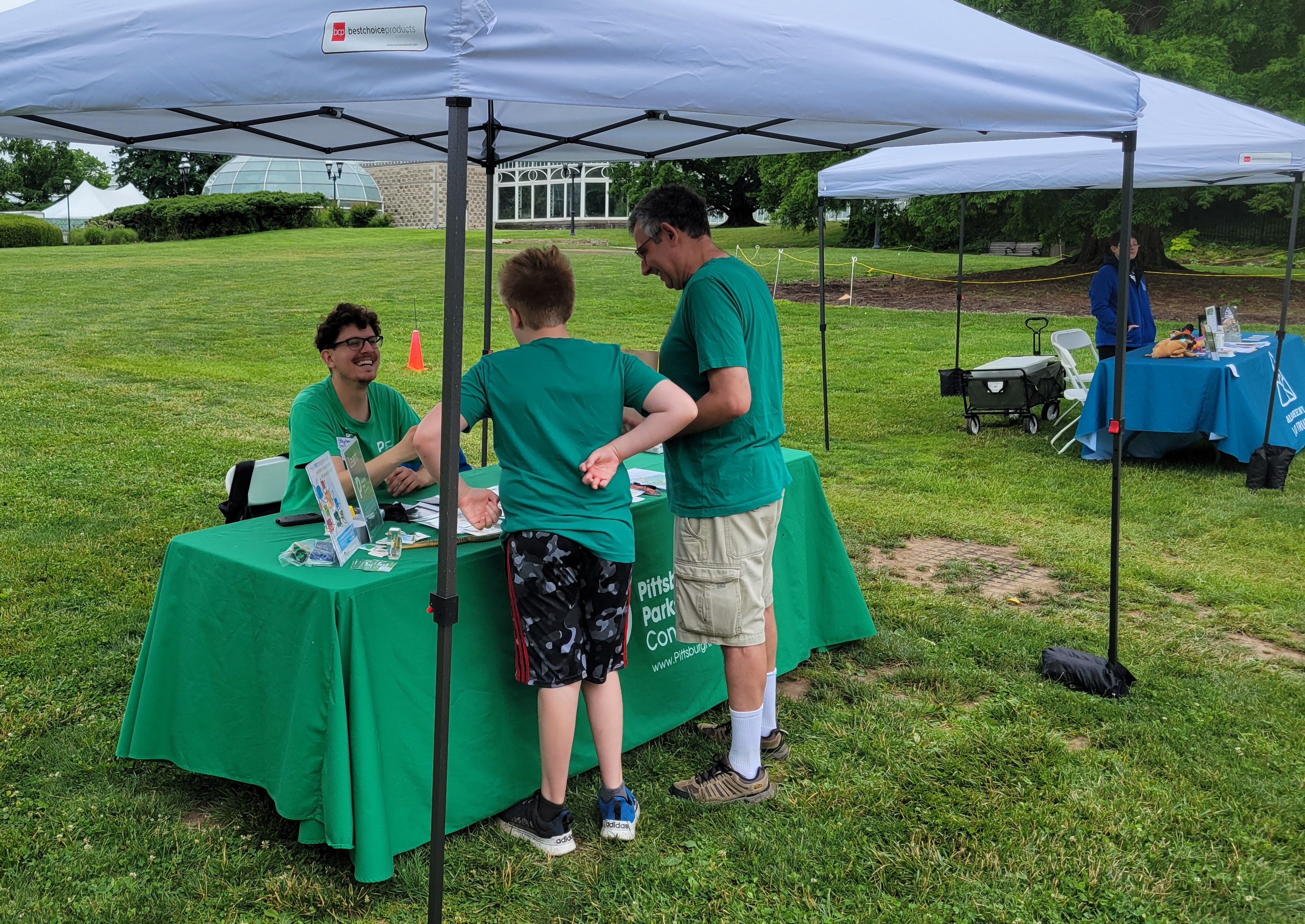
Stephen Bucklin from the Pittsburgh Parks Conservancy
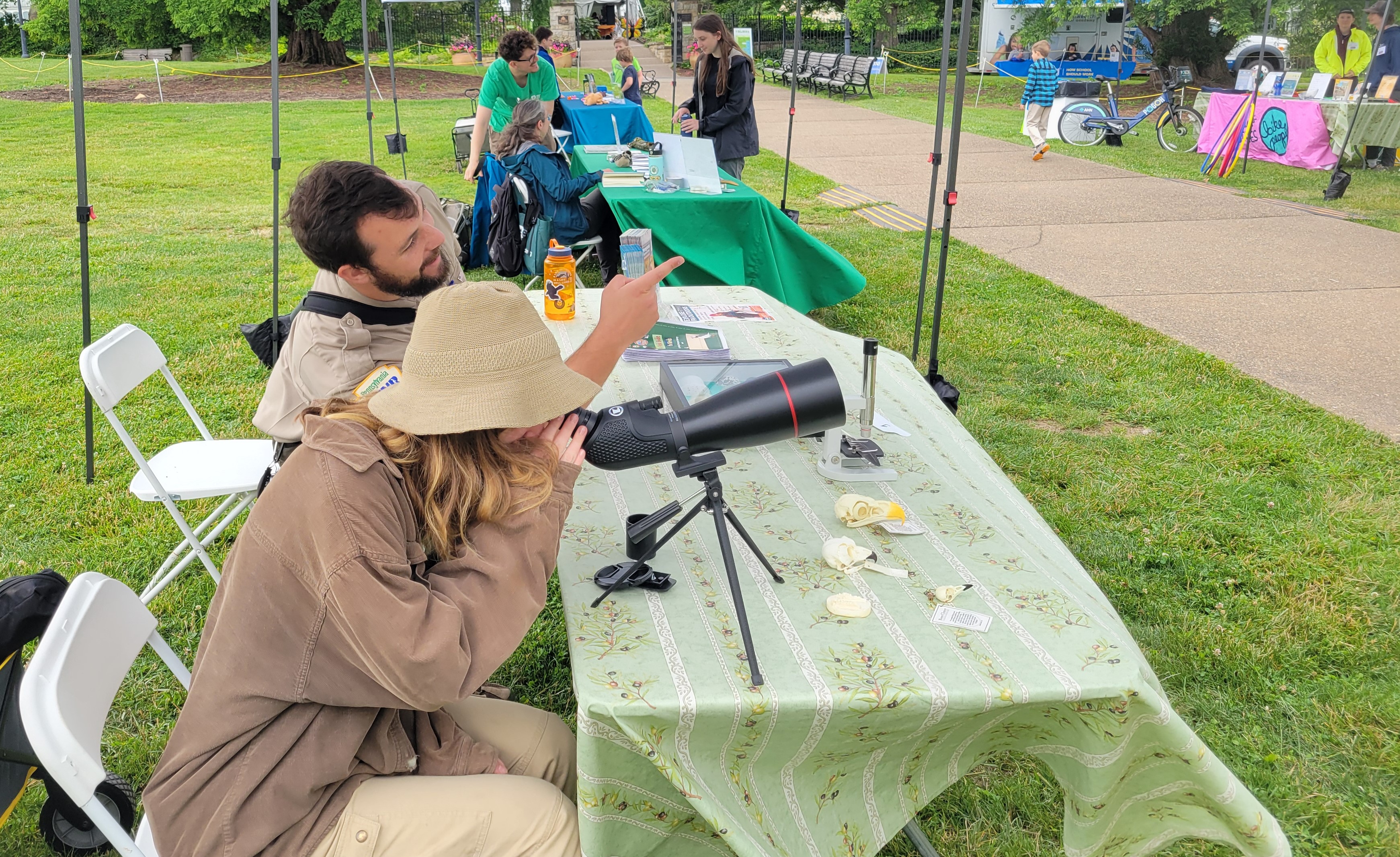
Jack Lachendro of Point State Park lined up a spotting scope for guests to view the peregrine falcons on the Cathedral of Learning.
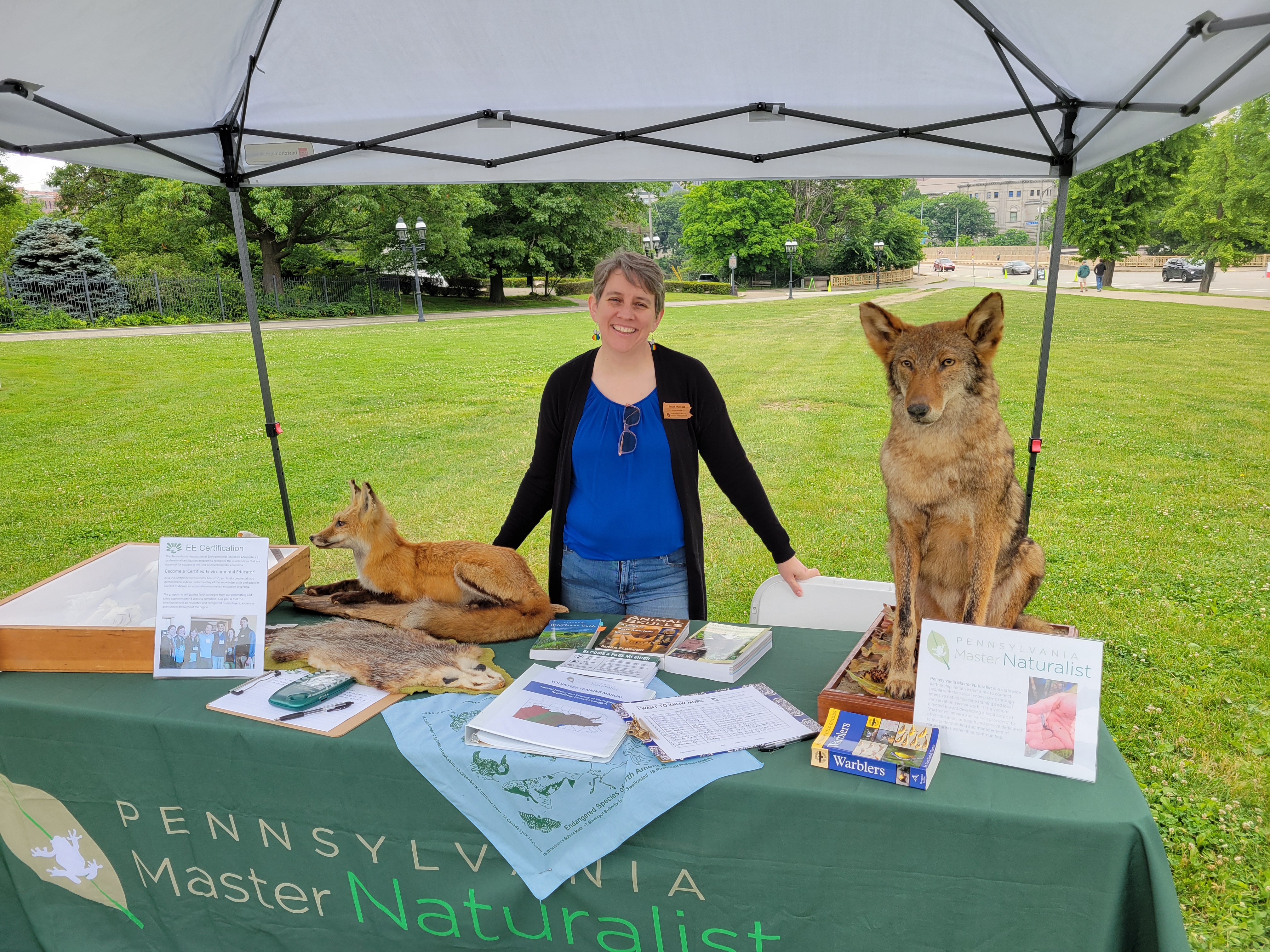
Master Naturalists share biofacts with BioBlitz attendees!
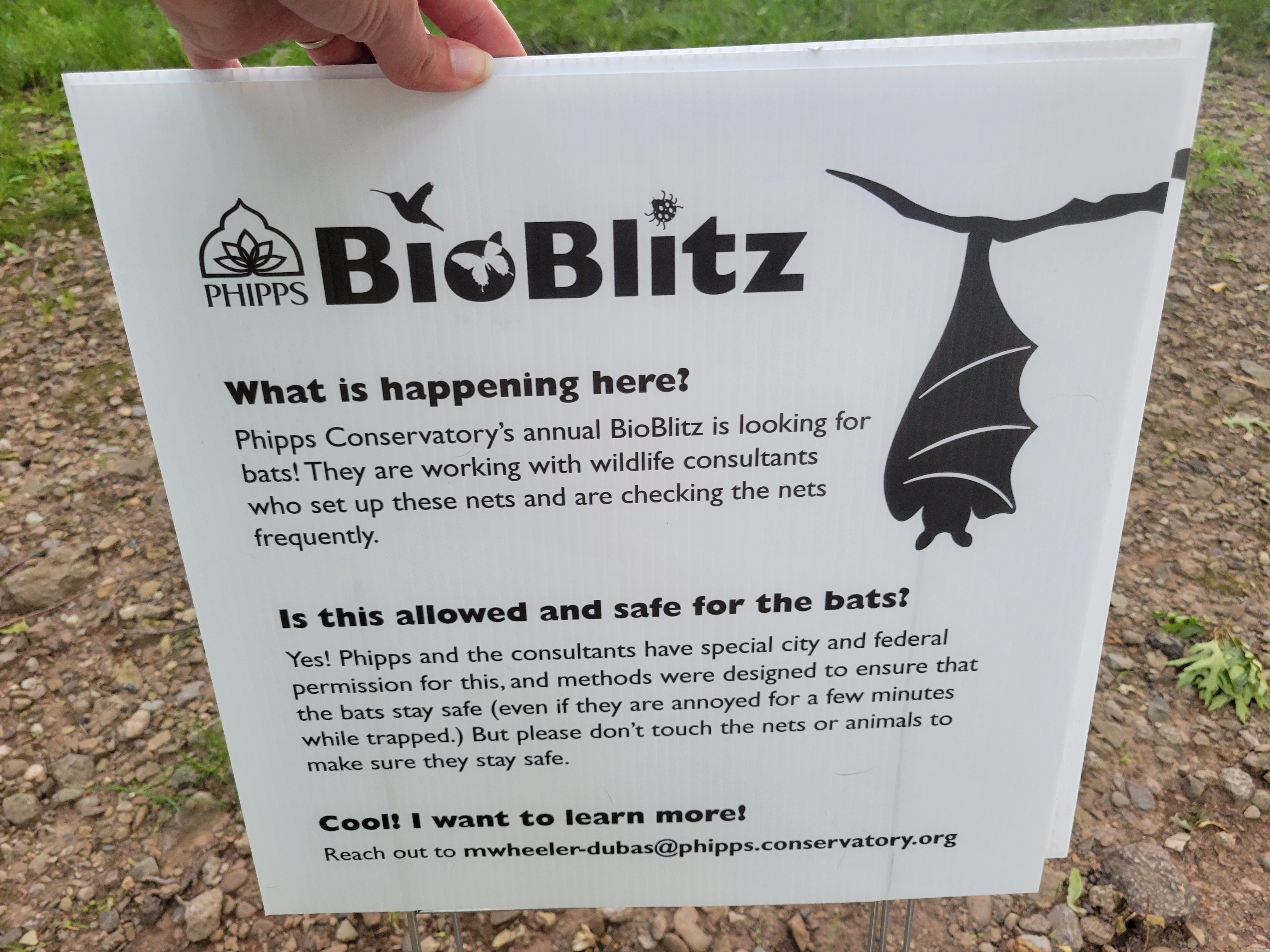
Saturday night, GAI consultants led a bat survey on Flagstaff Hill!
Data Collection
The key of a bioblitz is the total data collection! With the notable exception of 2020, BioBlitz has recorded of the biodiversity of Schenley Park since 2016, as you can see from the graph below:
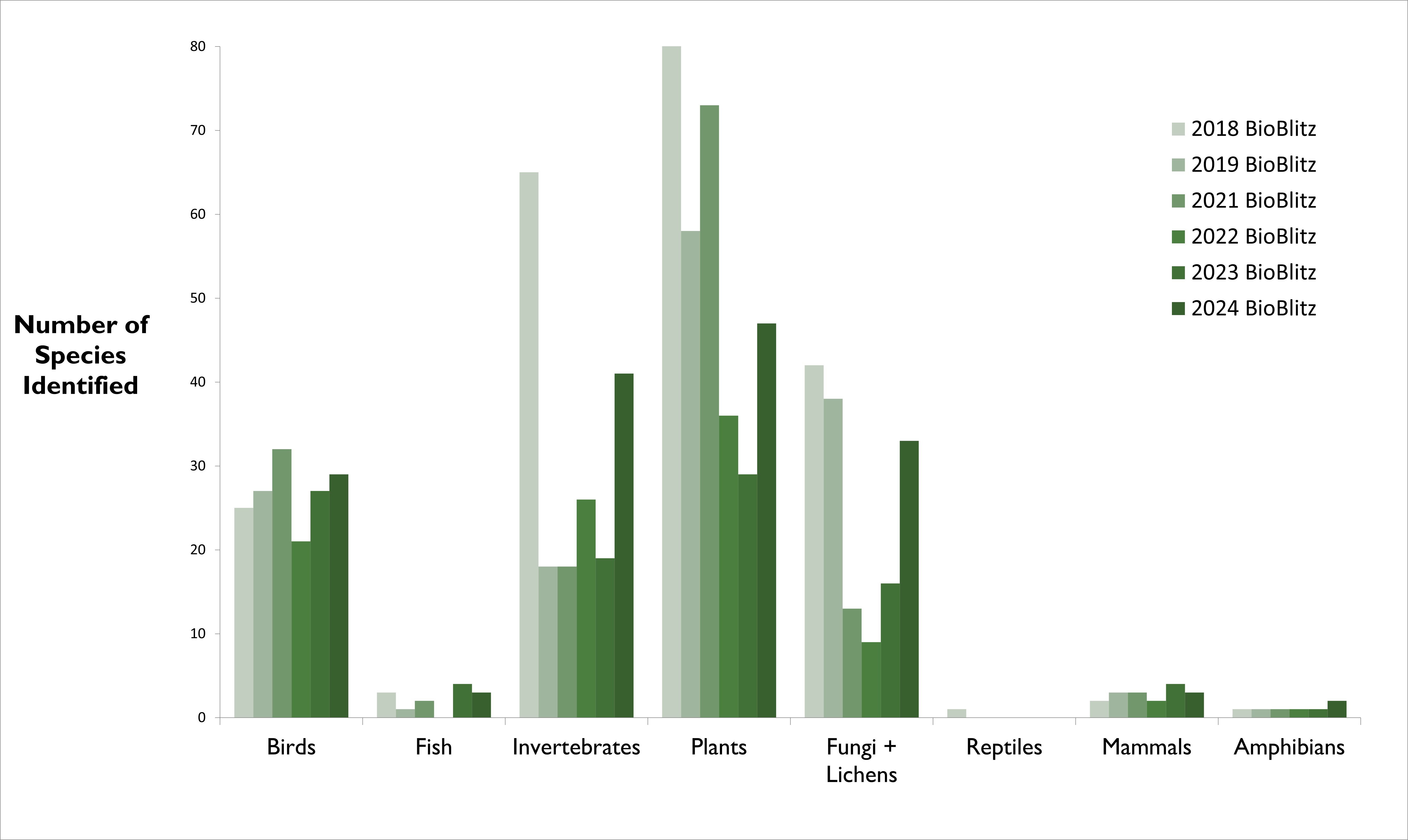
There is some variation year to year depending on what scientists were present.
The complete species list is below! If you’re reading this home, how might these species counts change if we held this event at different times of the year? What groups might stay the same? Which ones would be different? Which groups might more or fewer species at a different time of year?
Birds
American Crow
American Goldfinch
American Robin
Blue Jay
Blue-headed Vireo
Brown-headed Cowbird
Chickadee sp
Cedar Waxwing
Chimney Swift
Chipping Sparrow
Common Grackle
Eastern Phoebe
European Starling
House Finch
House Sparrow
Mourning Dove
Northern Cardinal
Peregrine Falcon
Red-bellied Woodpecker
Red-eyed Vireo
Red-tailed Hawk
Red-winged Blackbird
Rock Pigeon (Feral Pigeon)
Ruby-throated Hummingbird
Scarlet Tanager
Song Sparrow
Tufted Titmouse
Turkey Vulture
Warbling Vireo
Fish
Lepomis cyanellus, Green Sunfish
Lepomis gibbosus, Pumpkinseed
Lepomis macrochirus, Bluegill
Invertebrates
Annelida, earth worm
Diplopoda, millipede
Carychium exile
Ventridens ligera
Deroceras laeve
Zonitoides arboreus
Arion hortensis
Acari, Mites and Ticks
Araneae, Spiders
Attulus fasciger, Asiatic Wall Jumping Spider
Erigone, Black Dwarf Spiders
Haemaphysalis, Tick
Leucauge venusta, Orchard Orbweaver
Philodromus, Running Crab Spiders
Pholcus, Common Cellar Spiders
Pityohyphantes, Hammock spider
Salticinae, Typical Jumping Spiders
Theridiidae, Comb-footed Spiders
Wulfila, Ghost spider
Amphipsocidae, Hairy-winged Barklice
Baetidae, Small Mayflies
Bombus impatiens, Common Eastern Bumble Bee
Chalcosyrphus nemorum, Dusky-banded Leafwalker
Condylostylus patibulatus, Long-legged fly
Curculio glandium, Acorn weevil
Dusona, Parasitic wasp
Gelechioidea, Curved-horn Moths
Micrutalis calva, Honeylocust Treehopper
Paria, Paria
Photinus pyralis, Common Eastern Firefly
Propylea quatuordecimpunctata, Fourteen-spotted Lady Beetle
Pyropyga, Pyropyga
Scraptiidae, False Flower Beetles
Simulium, Common Blackflies
Stenotus, Stenotus
Tachinidae, Bristle Flies
Tetraopes, Milkweed Longhorn Beetles
Tetraopes tetrophthalmus, Red Milkweed Beetle
Toxomerus politus, Maize Calligrapher
Trichoptera, Caddisflies
Vespa crabro, European Hornet
Plants
Adiantum, Maidenhair ferns
Aegopodium, Aegopodium
Allium giganteum, Giant Allium
Angelonia salicariifolia, Willowleaf angelon
Artemisia stelleriana, Hoary Mugwort
Athyrium angustum, Northern lady fern
Beta vulgaris, Beet
Brachythecium salebrosum, Smooth-stalk Feather-moss
Ceanothus americanus, New Jersey tea
Cecropia, Cecropias
Cichorium intybus, Chicory
Clematis, Clematis and leatherflowers
Coreopsis grandiflora, Large-flowered tickseed
Cynara cardunculus, Artichoke Thistle
Davallia, Rabbit's foot ferns
Echinacea purpurea, Purple coneflower
Entodon, Entodon mosses
Hamamelis virginiana, common witch-hazel
Hydrangea petiolaris, Climbing Hydrangea
Ilex verticillata, Winterberry holly
Justicia brandegeeana, Shrimp plant
Leonurus cardiaca, Common motherwort
Ligularia, Leopard plants
Ligularia dentata, Leopardplant
Ligustrum, Privets
Liriodendron tulipifera, Tulip tree
Matricaria chamomilla, German Chamomile
Mentha spicata, Spearmint
Momordica charantia, Bitter Melon
Papaver, Poppies
Phuopsis, Phuopsis
Pilea microphylla, Artillery plant
Plerandra elegantissima, False Aralia
Plumbago, Plumbagos
Pycnosorus, Pycnosorus
Quercus imbricaria, Shingle oak
Quercus imbricaria, Shingle oak
Rhus aromatica, Fragrant sumac
Rosa, Roses
Rudbeckia laciniata, Cutleaf coneflower
Russelia equisetiformis, Firecracker plant
Sedum sexangulare, Tasteless Stonecrop
Strobilanthes, Strobilanthes
Thalictrum revolutum, Waxy Meadow-rue
Tradescantia, Spiderworts
Vaccinium, Vaccinium
Verbascum blattaria, Moth mullein
Fungi and Lichen
Acarospora fuscata, brown cobblestone lichen
Candelaria concolor, Candleflame Lichen
Candelariella vitellina, Common Goldspeck
Crespoa crozalsiana, Reticulate Shield
Flavoparmelia caperata, Common greenshield lichen
Fungi, Unknown fungus
Lepraria, Dust Lichens
Myelochroa aurulenta, Powdery Axil-bristle Lichen
Myriolecis dispersa, Mortar Rim Lichen
Parmelia sulcata, Shield lichen
Parmotrema hypotropum, Powdered ruffle lichen
Phaeophyscia adiastola, Powder-tipped Shadow Lichen
Phaeophyscia pusilloides, Pom-pom Shadow Lichen
Phaeophyscia rubropulchra, Orange-cored Shadow Lichen
Physcia adscendens, Hooded Rosette Lichen
Physcia millegrana, Rosette lichen
Physcia stellaris, Star Rosette Lichen
Physcia subtilis, Slender rosette lichen
Physciaceae, Physciaceae lichen
Physciella chloantha, Powdery-margined Cryptic Shade Lichen
Physconia leucoleiptes, Bottle-brush Frost Lichen
Punctelia caseana, Moondust Speckled Lichen
Punctelia rudecta, Rough speckled shield lichen
Pyxine subcinerea, Mustard lichen
Sarcogyne, Grain-spored lichens
Scutellinia, Eyelash cups
Stereum ostrea, False Turkey-Tail
Trapelia placodioides, Trapelia placodioides
Trichaptum biforme, Violet-toothed polypore
Verrucariales, Verrucariales
Xanthomendoza fallax, Hooded Sunburst Lichen
Xanthomendoza weberi, Bare-bottom Sunburst Lichen
Xanthoparmelia plittii, Plitt's Rock Shield
Mammals
Odocoileus virginianus, White-tailed Deer
Tamias striatus, Eastern chipmunk
Sylvilagus floridanus, Eastern cottontail
Amphibians
American bullfrog, Lithobates catesbeianus
Unknown salamander

